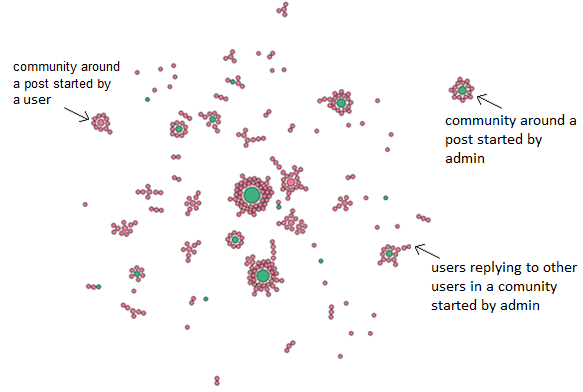Category: Parkinson's Disease: Non-Motor Symptoms
Objective: This study aims to:
(1) Explore the feasibility of delivering a web application to enable social interaction and analyse digital social characteristics.
(2) Gather insights into the relationship between online social engagement and predictive risk indicators of Parkinson’s disease (PD).
Background: The prodromal phase of PD is characterised by multiple symptoms that pre-date diagnosis for years, providing an opportunity for early intervention[1]. Since social engagement is thought to be a protective factor for neurodegeneration, and loneliness is a known PD risk factor[2], we co-developed a web application to facilitate social interaction amongst people at risk of developing future PD.
Method: A digital social community was hosted on the PREDICT-PD website, an online UK cohort study that stratifies participants for risk of future PD[3]. 219 PREDICT-PD participants (40% male and 57% female) took part in a 4-month pilot of the web application. The application included weekly engagement activities (inc. blogs, facts), moderated community discussions, and opportunities for private 1-1 conversations. We examined the pattern of connections generated over time through the cumulative number of posts and replies using social network analysis[4]. Regression analyses estimated relationships between PD risk scores[5] and social network measures. Reflexive thematic analysis explored the content of 364 posts within community threads to explore how contributors used and experienced the digital social community.
Results: The digital social community was feasible, acceptable, and fostered social interaction. Participation was asynchronous, with some individuals acting as ‘brokers’ between groups of discussions. As more participants joined, distinct groups of connected users started to emerge (Fig 1). Matching participants’ online activity with their PREDICT-PD demographic and risk data was feasible (85%), showing potential for future analyses to examine whether social engagement and topological patterns of interaction modify the risk of developing neurodegenerative diseases. Thematic analysis highlighted reciprocal peer support, knowledge exchange, aspirations for PD research and care, and the usability of digital health.
Conclusion: This study highlights the potential of leveraging web applications to study the role of social capital in moderating PD risk and underscores the feasibility of such approaches in future research.
Cumulative network of individual community posts.
References: [1] Roos DS, Klein M, Deeg DJ, Doty RL, Berendse HW. Prevalence of prodromal symptoms of Parkinson’s disease in the late middle-aged population. Journal of Parkinson’s Disease. 2022;12(3):967-74.
[2] McDaniels B, Subramanian I. Social isolation, loneliness and mental health sequelae of the Covid-19 pandemic in Parkinson’s disease. International Review of Neurobiology. 165: Elsevier; 2022. p. 197-227.
[3] Noyce AJ, R’Bibo L, Peress L, Bestwick JP, Adams‐Carr KL, Mencacci NE, Hawkes CH, Masters JM, Wood N, Hardy J, Giovannoni G. PREDICT‐PD: An online approach to prospectively identify risk indicators of Parkinson’s disease. Movement Disorders. 2017 Feb;32(2):219-26.
[4] Panzarasa P, Griffiths CJ, Sastry N, De Simoni A. Social medical capital: how patients and caregivers can benefit from online social interactions. Journal of Medical Internet Research. 2020;22(7):e16337.
[5] Bestwick JP, Auger SD, Simonet C, Rees RN, Rack D, Jitlal M, et al. Improving estimation of Parkinson’s disease risk—the enhanced PREDICT-PD algorithm. npj Parkinson’s Disease. 2021;7(1):33.
To cite this abstract in AMA style:
L. Smith, X. Li, A. Gill, P. Panzarasa, J. Bestwick, A. Schrag, A. Noyce, A. de Simoni. Feasibility of a Web Application to Enable Social Interaction in the PREDICT-PD Cohort [abstract]. Mov Disord. 2024; 39 (suppl 1). https://www.mdsabstracts.org/abstract/feasibility-of-a-web-application-to-enable-social-interaction-in-the-predict-pd-cohort/. Accessed December 15, 2025.« Back to 2024 International Congress
MDS Abstracts - https://www.mdsabstracts.org/abstract/feasibility-of-a-web-application-to-enable-social-interaction-in-the-predict-pd-cohort/

